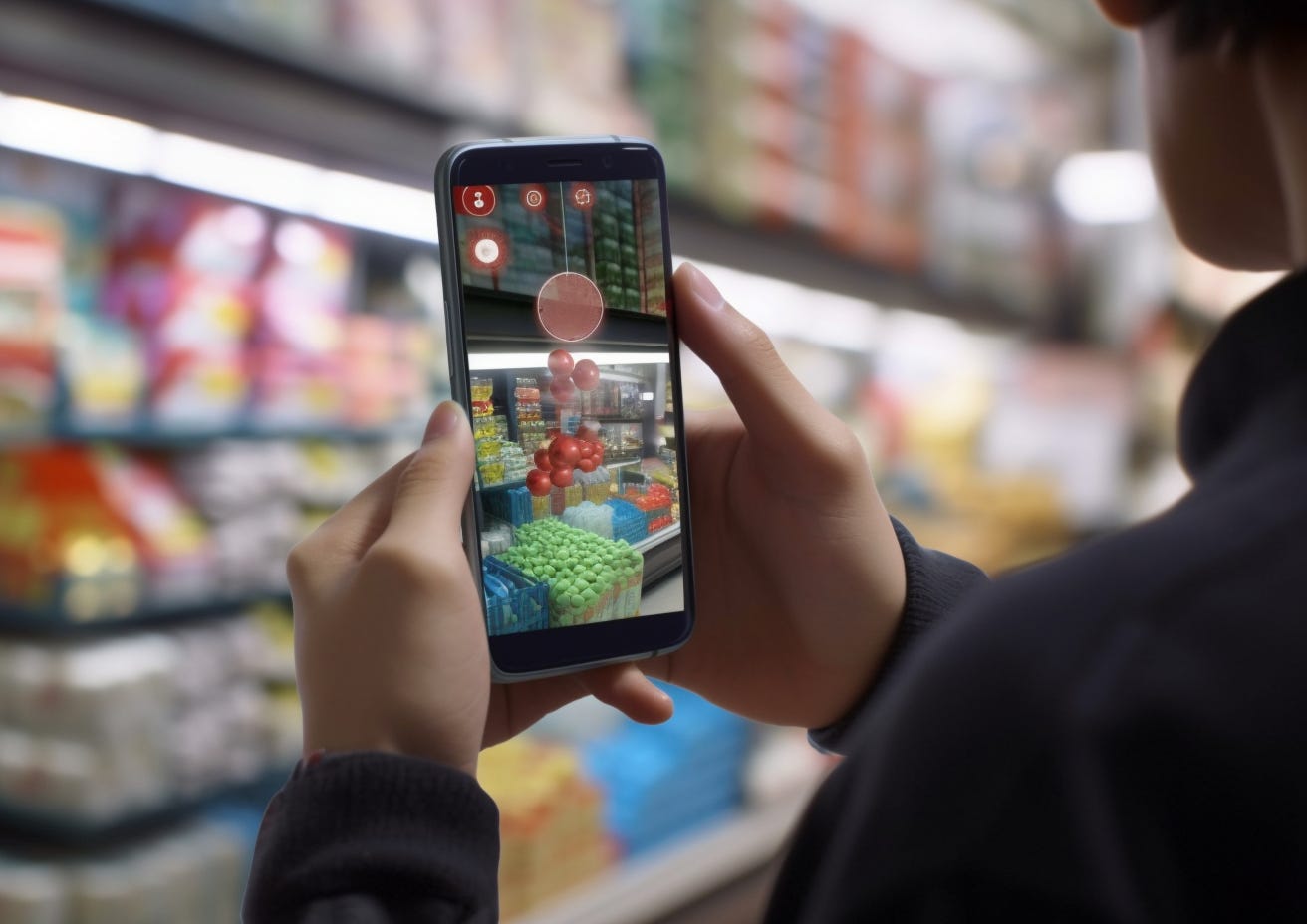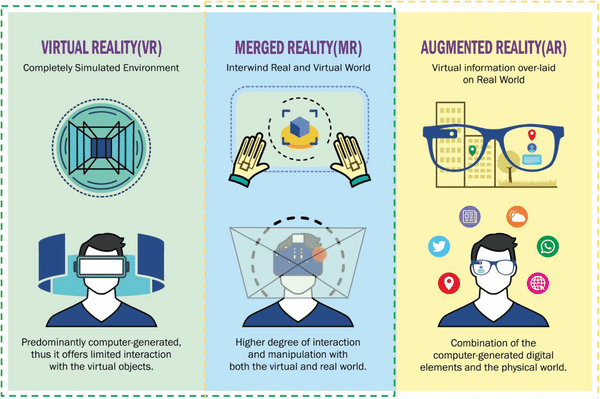Wednesday W.O.W - WebAR
[5min read] Your mid-week bite sized treat on emerging tech and our journey to the Metaverse. Learn about Web-based Augmented Reality, the "stepping stone" to the future of full immersive experiences.

A nibble of knowledge in your inbox every Wednesday with a simple format:
🇼 What the technology is
🇴 Objective(s) - what is it trying to achieve, with some examples
🇼 Why it is important to users as well as businesses & brands.
What is WebAR?
WebAR, or Web-based Augmented Reality, is a technology that enables users to experience augmented reality through a web browser on their devices, usually a smartphone. Most of the time this means interacting with items overlaid over your cameras view on screen, like this:
Therefore in the bigger context, WebAR usually falls under the category of Merged/Mixed Reality (see below). What makes is so accessible and simple is that the experience is accessed via a web browser and camera, something every smartphone has. Real-time 3D technology is required to create the virtual elements used in these experienes.

What are the objectives of the technology?
Accessibility: The primary objective of WebAR technology is to make AR experiences more accessible to users. With WebAR, users can easily access AR experiences without having to download a separate app or software, just view a QR code via your phones camera and off you go. This makes it perfect for “on the fly” experiences, which can link into larger campaigns.
User Engagement: WebAR is a great tool for organisations to engage with the public and provide them with a unique and interactive experience. It allows them to showcase their products and ideas in a more immersive way and helps to increase user engagement and interest in their brand.
Cost-effective: Another objective of WebAR is to provide a cost-effective solution for businesses to create and distribute AR experiences. With WebAR, businesses can create AR experiences using existing web development tools and frameworks, which can significantly reduce the cost of development.
Analytics: WebAR technology also provides businesses with valuable insights into user behavior and engagement. They can track user interactions and collect data to optimize and improve their AR experiences. Usually these will be a part of a bigger campaign an funnel users into other virtual or in-person touchpoints.
Cross-platform compatibility: WebAR is compatible with multiple devices and platforms, making it easy for businesses to reach a wider audience. Users can access WebAR experiences on their smartphones, tablets, and desktops, regardless of the operating system they are using.
Why is it important and what role does it play in the next 5 years?
It’s very likely that in 3-5 years, the average user will have different hardware on their person most of the time, most likely some form of “smart glasses” that will make Augemented Reality and Mixed Reality part of everyday life. Until that time however, the smartphone is the ubiquitous hardware that most of us carry.
WebAR is a great solution because it doesn't require any additional hardware or software to run. Users can access AR experiences through their web browsers on devices they already own. This makes it a cost-effective and accessible option for businesses to engage with their customers and provide them with unique and immersive experiences that enhance shopping, learning, and entertainment.
I usually position WebAR as a great “stepping stone” for organisations to dabble in AR with high acessability and relatively low cost.
Three Case Studies you can try yourself
Food/Beverage Case study: Asda Wagyu Steak Cooking Tutorial
This was an interactive and immersive WebAR experience to promote the latest Asda own-brand ‘Extra Special’ Wagyu steak range. The experience was part of a larger consumer education campaign.
The experience featured a fully custom 3D animated scene, demonstrating how to cook the perfect Wagyu steak. This included seasoning, cooking / resting times and serving suggestions.
Try it yourself: If you are on your smartphone, click here or else use view this QR code through your phones camera and a link to your browser should show up
Retail Case study: Kinder - Jump Into Africa Portal
The ‘Jump Into Africa’ Safari experience features a 3D WebAR Portal which families could interact with, walk inside and explore the African Savanna. Once inside the portal, animated 3D safari animals can be discovered alongside fun infographics to learn more about the animals in their own natural habitat.
Shoppers were able to find the experience through in-store signage and ‘peel away’ print flyers located next to Kinder products in the supermarket.
Try it yourself: If you are on your smartphone, click here or else use view this QR code through your phones camera and a link to your browser should show up
Real Estate Case study: Walk around and explore a luxury apartment “360 3D”
In this immersive AR experience, see an apartment's 3D/360 environment via your phones camera by walking around in your own space.
Related is a great Saatchi Art case study that enables users to view over 1 million original works of art on their wall before buying online–no app required.
Try it yourself: If you are on your smartphone, click here or else use view this QR code through your phones camera and a link to your browser should show up
If you are interested in creating a WebAR experience for your organisation, get in touch. It is one of the (many) consulting services I offer in partnership with world leading platforms. Reach out to me at https://johnsonandhunt.com/reach-out




